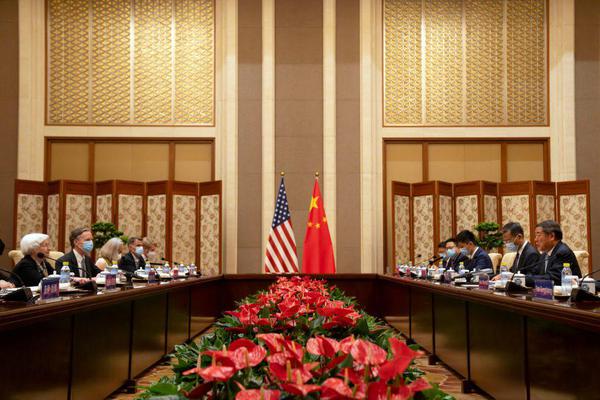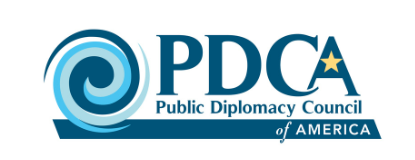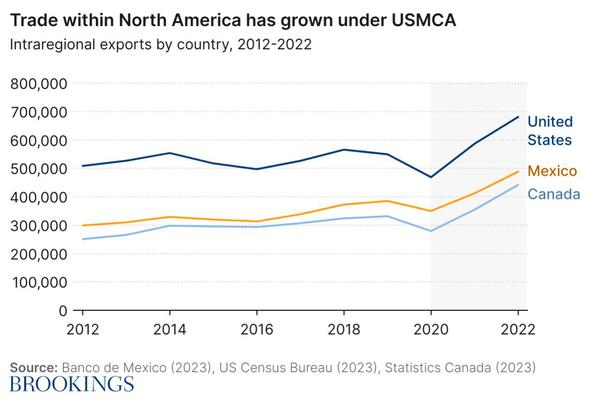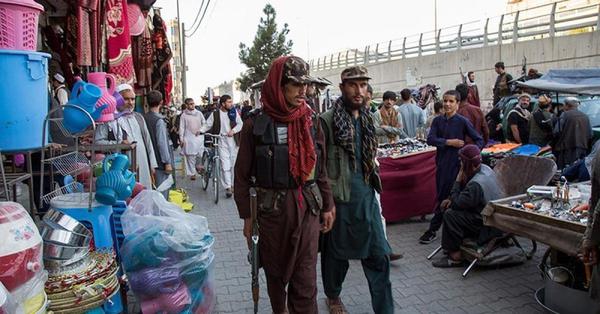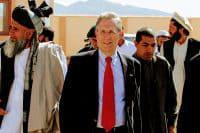American University Graduate Practicum
•
September 5 2023
Report: Looking at the Use of Digital Diplomacy/Public Diplomacy Use by Select US Embassies and Bureaus, 2023 AU SIS Summer Practicum Final Report
Executive Summary
At the request of the Bureau of Global Public Affairs, the summer 2023 Public Diplomacy
practicum team at American University’s School of International Service carried out an audit of
social media sites on an assigned collection of US Missions and Washington based offices with
the objective of identifying the best practices and practices that could be improved. The team also
tried to identify other useful observations related to how USG missions and offices are generating
engagement with their audiences on social media and the potential for expanded outreach.
In studying the engagement by embassies and State Department offices on each social media
platform, the team first examined the social media penetration in each country examine, tried to
determine the different audiences that were apparently being targeted by the embassy or State
Department office/bureau, outline the broad political and social context of target countries and
observed if the embassies and missions were closely following the objectives identified in their
Integrated Country Strategies (ICS). The project team applied this methodology for the overseas
missions studied and adapted it to examine the State Department Offices and the special platforms
which the team had been asked to study, i.e., Telegram and LinkedIn.
The team found that achieving higher engagement is correlated with how well content is
tailored to reflect local cultural and social contexts for the host country where the mission is
located or specific audiences that care about the mission in the case of multilateral missions. For
example, the Embassy in Kathmandu, Nepal has strong engagement with its audiences which
appears to be at least in part due to the ambassador directly engaging with Nepalese viewers
through tailored cultural connections via the most used social media platforms in Nepal.
Similarly, and more broadly, the team found that a mission’s use of the ambassador in social
media postings correlates with generating strong engagement. The persona of the Ambassador as
a ‘celebrity’ played a role in engagement across various Missions and social media platforms. The
project team observed that the presence of Ambassadors on social media platforms often boosted
engagement on posts, regardless of the gender of the Ambassador. But the team recommends
balancing focus on the ambassador with an array of postings highlighting other embassy staff.
In this connection, Embassy postings about gender issues, especially women and girls, seemed to
regularly garner good engagement.
Another example of tailored content is the use of local languages and cultural icons/practices.
Embassies Conakry and Embassy Rangoon social media posts, for example, attracted significant
engagement when the posts were offered in French and Burmese respectively and more when local
citizens or cultural icons were included.
The use of cross platform posting of the same media content (photos, videos) for all or most social
media accounts was a practice that the team observed for each embassy studied, but the team
found different degrees of evident engagement by local audiences. This may be a successful way to
get information out to a large audience, but it was hard to measure if the information was read
because much of the content garnered little reaction.
Embassies and Missions (e.g. USUNVIE) with some curated local content added seemed to fare better. Specifically, the team concludes that the lack of platform differentiation between what is put on Facebook and Instagram is curbing engagement from audiences that differ in age and engagement opportunities.
Finding ways to invest more time in selective differentiation of posts among platforms (and thus audiences) would seem to be a very valuable practice.
Multilateral missions have a bit different challenge than bilateral embassies, in part because they
have real and potential audiences that are spread across many counties and often have a particular
set of substantive interests. For example, Facebook was a strong place for engagement for most
country missions, but in the case of the US Mission to the UN Agencies in Vienna (USUNVIE),
the Facebook posts attracted the least engagement of all of the USUNVIE accounts, even though
Facebook has the most followers for the mission.
As noted, a number of embassy missions posted the same content across all platforms, without
curating specific content for each platform. But the team notes that different social media
platforms have different demographic followings, and it is a best public diplomacy practice to
tailor posting to different audiences. However, most embassies seemed to post very identical
material, especially material received from Washington, despite demographic audience differences
on various platforms. This does not seem to be a best practice for attracting audience attention
given the low engagement which the team observed. The team assumed that this practice was
being followed because of Public Diplomacy section staff and time limitations. This practice may
serve to get information out to audiences, however, it was very hard for the team to measure if that
was taking place..
The team also found that more engagement seems to flow if the postings do not use too much text.
In instances on Twitter or Instagram where photos and graphics are used, those that contain lots of
text in the graphic or photograph, receive less engagement than traditional photos without text.
However, carefully crafted photographic posts with less text and carefully chosen words, produced
a high level of engagement. U.S. Mission Brazil’s accounts, for example, successfully use posts without lengthy captions and minimal or text-less graphics. One example of space for improvement that the
team observed involved the Office of Monitoring and Trafficking In Persons. That office posted items on a series of Presidential Awards for efforts to combat trafficking. These posts, however, include many words in the graphics which coincided with low engagement on the posts. The posts were otherwise about significant anti-trafficking work.
Consistently across platforms and embassy missions, the team also found that there are higher levels of engagement on posts about visas, events, English education, fellowships, intern opportunities, opportunities to engage with the embassy and job openings. Visa process instructions and information routinely also receive high engagement numbers compared to an average on that embassy platform,
likely because the audiences for those posts are very interested in obtaining visas.
In this connection, social media posts where opportunities for engagement with embassy staff were
observed to be popular and registered high engagement rates. Whether events, educational
opportunities and/or fellowships, those posts tend to gain a lot of attention. Using platforms to publicize
these opportunities also seems to align with an uptick in engagement across other posts by the
embassy, perhaps as more viewers are actively looking at the embassy’s social media page for
opportunities. Posts should think instrumentally about how to use viewer interest in these kinds of
posts to gain attention for other high priority messaging.
The team found that Embassy Nepal was one mission that stood out with very high engagement
across all platforms. It serves as an example of how social media can be used to garner wide
reach within a country. The Embassy’s 4.4 million Facebook followers with daily posts, plus
consistent near daily posts on Twitter, Instagram, and Pro Flicker resulted in far reaching
engagement and messaging across all platforms in the country.
While for a number of reasons social media is usually used for one way engagement and sharing of
information, the team observed that social media can also be used as a tool of public diplomacy for two way engagement. For example, the team found that live Q’s & A’s seemed to be popular. Embassy
Conakry and Embassy Brasilia hosted live Qs and As on their Instagram page, which generated a
large number of comments, creating a decree of two way engagement between each respective
Embassy and platform users in real time.
The team realizes that staff numbers and time constraints limit what embassies can do, but concludes that embassies should look to take advantage of forums that provide for such two-way exchanges with social media audiences. This could be a good practice, used prudently.
The team also concluded that Twitter and Telegram (and WhatsApp though we did not officially
audit this platform) have great untapped potential through the ability to reach expanded networks
for sharing information with the use of these platforms. Using Twitter to curate for local
audiences though re-tweeting relevance to local culture can be a good practice, instead of only
retweeting main State Department accounts without comment. If the embassy staff used a few
moments when retweeting some of the material to add a comment, tying a tweet into a local
message that resonates with local people, the team believes this could create higher engagement
rates and reach more audiences. We would suggest that posts experiment with a limited number of
retweets to see if such a practice produces more engagement.
Telegram and WhatsApp are functionally similar and both provide an excellent opportunity to
reach individual users through their mobile devices to promote US policy interests. Our team
found that for each of the Telegram channels we researched, every message that was posted in a
channel was read (viewed) by at least 50% of the number of subscribers in the channel. For
example, Embassy Tashkent had 20,000+ subscribers to the Embassy channel, and each message
had over 10,000 views which is an extremely high rate of potential audience for embassies to reach
into groups and countries without access to normal media outlets. More use of Telegram message
posts (or similar channels) can be a great way to ensure a high percentage of information will be
delivered to individual subscribers - especially in authoritarian states.
Though the team did not look at WhatsApp channels or groups by any of the embassies we surveyed, our research suggests that in countries where WhatsApp is used by large populations can be used in a similar manner as Telegram. Both messaging platforms can be used to conduct public diplomacy by delivering U.S. messages directly to individual users who can re-share messages through their own contacts. In Russian language speaking populations, Telegram is used primarily over WhatsApp.
Short videos are used across all platforms, and receive considerably more likes than other posts such as longer videos that last over several minutes. This reflects the consistently growing popularity of these
short videos around the world over the last decade. Embassy Nepal’s use of Instagram short video
reels has been successful in growing viewer rates from 1,500 views per video earlier this year, to
approximately 15,000 - 20,000 views per reel into June 2023.
But not all short videos correlate with high engagement. The INL Instagram account, for example, uses primarily short videos to communicate on the account, but it receives low view count and low engagement likely because the bureau has not fully developed and implemented a plan based on best practices in the use of short-form video to gain wider and more consistent engagement. At present, the INL account uses the short video application to post bursts of pictures, rather than video.
Short form videos clearly have excellent potential for all embassy missions and bureaus to consider, for expanding public diplomacy reach and user engagement.
The team found a consistently low engagement on posts that articulate American values where
those values differ significantly from the local culture or country’s societal norms. Many Pride
posts had negative engagement across all platforms and embassies, for example, except in Brazil.
Similarly, Embassy posts promoting the Juneteenth holiday garnered negative reactions and
comments, likely because this is largely an American event (and recently elevated holiday) and
should be presented with context and with links to a local country’s culture and history.
Our interviews with digital diplomacy experts also pointed to the on-going need to find better ways to
combat misinformation online. The team found the Russia-Ukraine conflict is an area where
embassies can and are supporting US values and working to authenticate information on the
conflict in alignment with US policy. Each embassy or account we observed consistently
promoted U.S. policy of supporting Ukraine against Russian aggression on all social media
platforms. Support for Ukraine was positive across all platforms that we observed.
Finally, all embassy missions observed also appeared to do a good job of reflecting the objectives of their respective Integrated Country (or Mission) Strategies in their social media use.
The Practicum Team that prepared this report was made up of five graduate students, Hasan Syed, Israel Archuletta, Natalia Franco Castillo, Olivia Hille, Sokhna Ndoye, at AU's School of International Service, working with Professor and retired Ambassador Earl Anthony Wayne.



